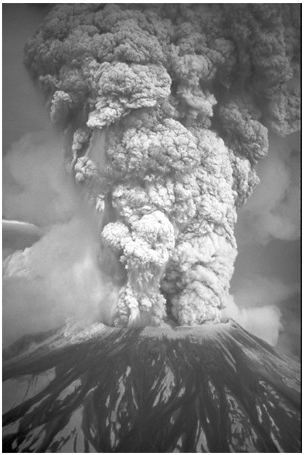How do geologists determine the number of ice ages and when they happened?
What will be an ideal response?
The best record of the timing of past ice ages, although indirect, comes from measuring the ratio of oxygen isotopes in tiny foraminifera shells that accumulated in successive layers of deep-sea sediment. The ratio of the 18O to 16O is strongly affected by the amount of water that is evaporated from the ocean and stored on continents as glacial ice. The isotope ratios in layers of different ages can, therefore, track the occurrence of past ice ages.
You might also like to view...
In a healthy population, the left and right sides of age-sex pyramids are symmetrical. Of the following, which is most likely to create an asymmetrical pyramid, i.e., to affect the shape of one side differently than the other?
A) war B) baby boom C) obesity D) birth control E) plague
The type of volcanic eruption shown in this photograph is

A) a lava fountain.
B) collapse of a volcanic dome.
C) a fissure eruption.
D) a pyroclastic column.
E) a volcanic mudflow.
The current use of fossil fuels versus the need to develop new renewable energy sources is an example of ________
A) governmental vision competing with economic practicalities B) two different goals that are not in opposition C) an issue that will never be resolved D) how short?term needs are in opposition to long?term sustainability E) the Precautionary Principle
At a latitude of 80° S, the prevailing surface winds will be ____
a. easterly b. southerly c. westerly d. northerly